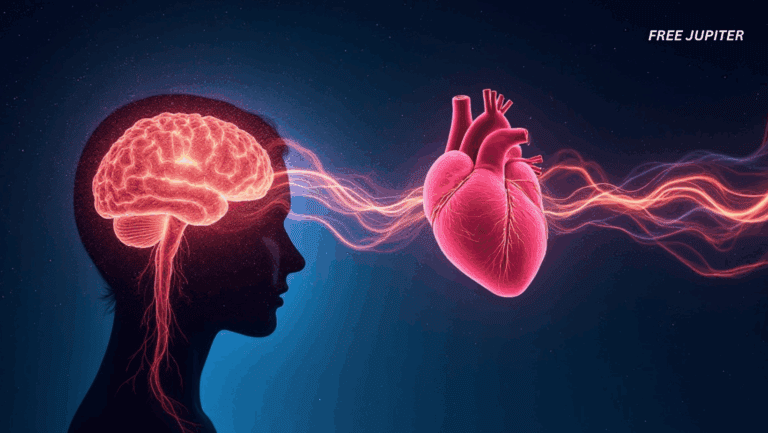If you’ve ever browsed TikTok or Instagram late at night, chances are you’ve stumbled upon someone with a piece of tape over their mouth, proudly claiming they’ve hacked the secret to perfect sleep, boundless energy, and even better athletic performance. This trend, known as mouth taping, is quickly becoming one of the internet’s more curious obsessions. But as strange as it may look, it’s raising even bigger questions—and red flags—among health experts.
At first glance, mouth taping might seem harmless, even clever. After all, in a world where sleep disorders are on the rise and people are desperate for better rest, any promising new trick sounds tempting. But medical professionals are now speaking out, warning that this seemingly simple hack might come with hidden dangers, especially for those with underlying health issues.
So, What Exactly Is Mouth Taping?
Mouth taping is just what it sounds like: placing a piece of adhesive tape over your lips before bed to force yourself to breathe through your nose while sleeping. The logic behind it is based on the idea that nasal breathing is healthier and more efficient than mouth breathing.
Dr. Jennifer Gourdin, a sports medicine physician from Silver Spring, Maryland, has been watching the trend closely. Known online as @drjthesportsdoc, she’s concerned that many people, especially athletes, are jumping on the trend without fully understanding what they’re getting into.
“This is a big deal in the sports world because sleep is directly tied to recovery and performance,” Gourdin explained. “But there’s not enough strong evidence right now to show that taping your mouth at night really works the way people think it does.”
Where Did This Idea Come From?
The mouth taping trend isn’t entirely new. Its roots can be traced back to nasal breathing advocates and techniques like the Buteyko Method, a breathing approach developed in the 1950s that emphasizes slow, controlled nasal breathing to improve oxygen uptake. Wellness influencers have also touted the benefits of nasal breathing for everything from reducing stress to enhancing physical endurance.
Eventually, these ideas trickled into the mainstream, where they were combined with the visual punch of social media. After all, what’s more eye-catching than someone literally taping their mouth shut before bed?
Soon, influencers were calling it a game-changer. They claimed it cured their snoring, improved their morning energy, and even helped with things like bad breath and dry mouth. Others swore it sharpened their focus and boosted their fitness.
Read more: Researchers Discover Desert Shrub That Targets Colorectal Cancer Cells, Leaves Healthy Tissue Intact
Is There Any Science Behind It?
To be fair, there is some science suggesting nasal breathing is better for the body than breathing through the mouth—at least in certain situations.
Breathing through your nose allows the air to be filtered, humidified, and warmed before it reaches your lungs. This process helps trap dust, allergens, and other airborne irritants. Nasal passages also produce nitric oxide, a gas that can help improve blood flow and oxygen delivery in the body.
Moreover, people who habitually breathe through their mouths—especially at night—often report issues like dry mouth, dental problems, bad breath, and even poor sleep quality.
So, encouraging nasal breathing isn’t a bad idea in theory. But the way it’s being promoted—by taping your mouth shut—is where things get murky.
The Risks Lurking Beneath the Tape
Dr. Gourdin isn’t the only expert raising concerns. She warns that mouth taping isn’t safe for everyone—and in some cases, it could make sleep problems even worse.
“If you have sleep apnea, allergies, a deviated septum, or even just nasal congestion from a cold, taping your mouth shut can restrict airflow while you sleep,” she explains. “This could cause a drop in oxygen levels or even trigger anxiety or panic attacks during the night.”
In fact, a recent review published in the journal PLOS One looked at 10 separate studies on mouth taping and found only minimal improvement in sleep for people with mild sleep apnea. Worse, the review also warned that people with nasal obstructions could face “serious detrimental health outcomes” if they try to force nasal breathing with tape.
And it doesn’t stop there. For people who experience claustrophobia, taping the mouth shut can trigger a stress response during sleep, causing restlessness or full-on anxiety attacks. Plus, improper or overly sticky tape can irritate the skin or even block the airway in rare cases.
Read more: Nutrition Experts Name the Healthiest Sandwich Bread—And They All Said The Same Thing
There’s Also a Regulatory Gap
Despite its growing popularity, there are currently no FDA-approved mouth tapes on the market for sleep improvement. That means consumers are largely on their own, using household tape or buying unregulated products from online retailers. Not all adhesives are designed to be used on sensitive facial skin, especially for hours at a time.
This lack of regulation means there’s no standardized safety protocol, no clinical oversight, and no real guarantee that what you’re sticking on your face won’t cause irritation, rashes, or worse.
Why Athletes Are Especially Drawn to the Trend
Mouth taping’s rise in the athletic world makes sense if you consider how important recovery is for physical performance. Sleep plays a huge role in muscle repair, hormone regulation, and mental focus—all critical factors for competitive athletes.
Some athletes also believe nasal breathing enhances endurance by making the lungs work more efficiently. But again, there’s no solid evidence that taping the mouth at night actually translates into better athletic outcomes.
“Improving sleep quality is essential for athletes, but there are better, safer ways to do it,” Dr. Gourdin said. “Mouth taping might seem like a quick fix, but it’s not a medically sound solution for most people.”
Better Alternatives for Sleep Quality
So, if mouth taping isn’t the magic bullet for better rest, what is?
Dr. Gourdin offers some tried-and-true tips that don’t involve adhesive or social media trends:
💤 1. Create a Calm Sleep Environment
A cool, quiet, and dark room can do wonders. Consider blackout curtains, white noise machines, or even aromatherapy if you’re sensitive to noise or light.
📵 2. Limit Screen Time Before Bed
Blue light from phones, tablets, and TVs can interfere with melatonin production—the hormone that tells your body it’s time to sleep. Power down electronics at least 30–60 minutes before bedtime.
☕ 3. Watch Your Caffeine and Alcohol
Both substances can disrupt your sleep cycle, even if you don’t realize it. Try cutting off caffeine after the afternoon and go easy on the nightcaps.
⏳ 4. Build a Bedtime Routine
Simple, relaxing activities like reading, stretching, or taking a warm bath can help your brain ease into sleep mode. Doing the same thing each night also signals to your body that it’s time to wind down.
😴 5. Try Sleeping on Your Side
For some people, especially those prone to snoring or sleep apnea, side sleeping can help keep the airways open and improve breathing patterns naturally.
When to Seek Medical Advice
If you’re snoring heavily, waking up gasping for air, or feeling exhausted even after a full night of sleep, it’s time to consult a professional. These could be signs of a sleep disorder, such as obstructive sleep apnea, which requires proper diagnosis and treatment—not duct tape.
There are medically approved devices like CPAP machines, nasal dilators, and sleep mouthguards that can actually help improve airflow and sleep quality under medical supervision.
Read more: Scientists Pinpoint the Exact Distance You Should Walk Each Day for Optimized Health
Final Thoughts: Just Because It’s Trending Doesn’t Mean It’s Safe
Mouth taping might look harmless in a 30-second TikTok clip, but it’s a classic example of a trend where the risks might far outweigh the rewards—especially if you’re doing it unsupervised.
While nasal breathing does have clear benefits, forcing your body into it with tape isn’t the smartest or safest path. Without long-term studies, FDA approval, or individual health screenings, this viral sleep hack is best left on the internet for now.
So before you tape your lips shut tonight, consider this: maybe a good old-fashioned bedtime routine, a dark room, and a little less screen time are all you really need.










